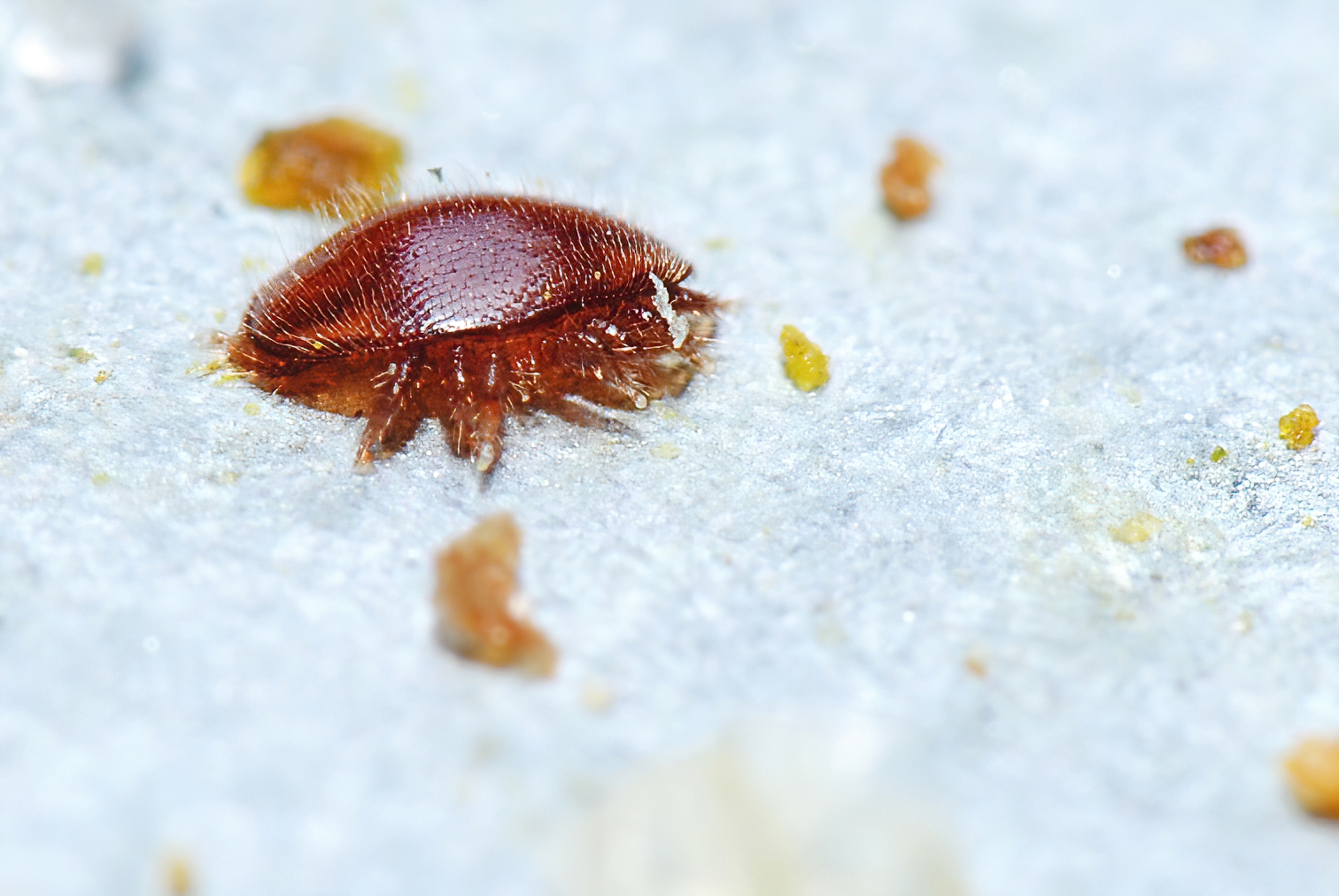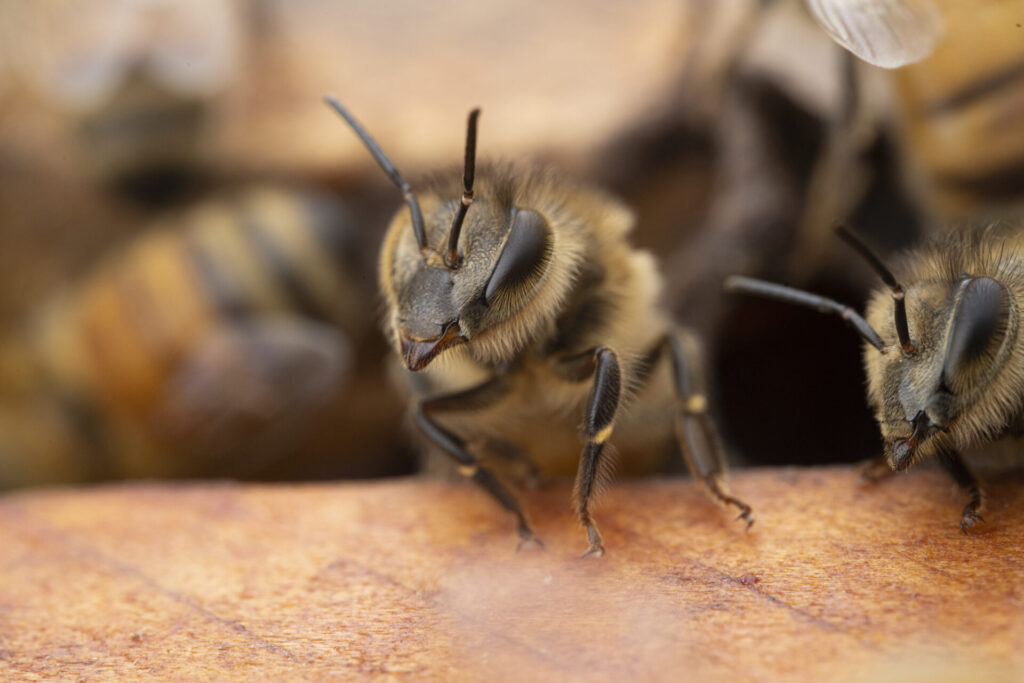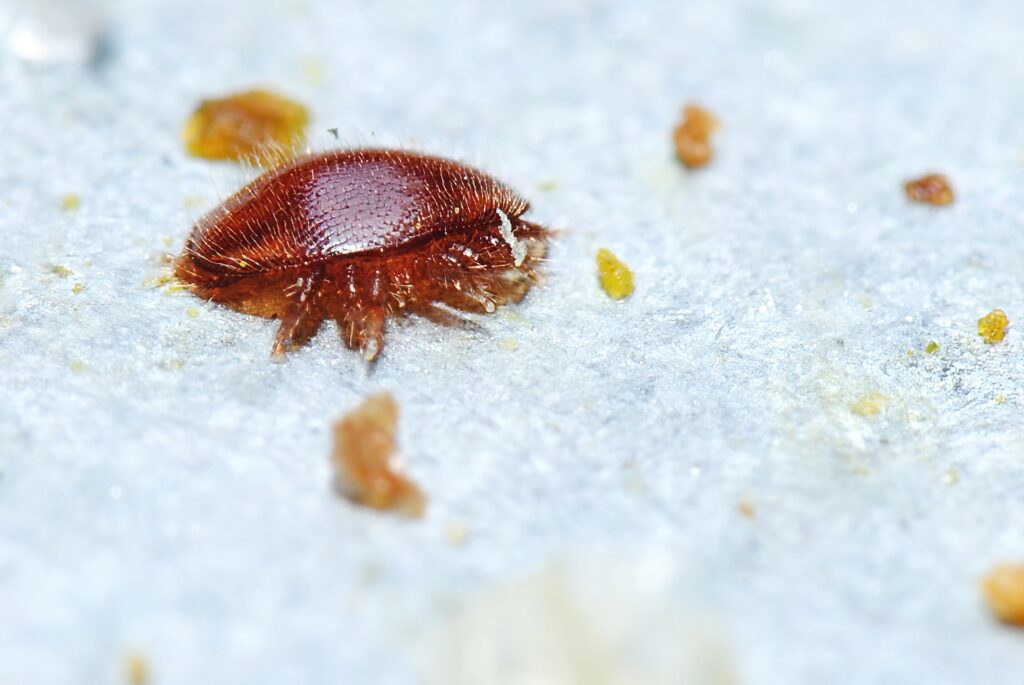Major varroa control project begins at Macquarie University
23 September 2024In October 2024 Macquarie University begins a five-year project led by Dr Théotime Colin to discover the best methods to manage the varroa mite in Australia. The project is possible […]

In October 2024 Macquarie University begins a five-year project led by Dr Théotime Colin to discover the best methods to manage the varroa mite in Australia.
The project is possible thanks to a $2.5 Million dollar donation to Macquarie University from the Ian & Shirley Norman Foundation. The Foundation supports initiatives that align with its core pillars: Being ecologically sound; Protecting people from harm; Walking together with traditional custodians; and Empowering communities. Tracy Norman, Founder & Chair of the Foundation, is herself a beekeeper and was required to destroy her hives in the Hunter Valley because of the varroa incursion. Her dedication to finding sustainable non-chemical solutions and supporting Australian beekeepers is inspired by this experience.
“It is hugely significant that the Ian & Shirley Norman Foundation has taken the lead in helping beekeepers address the varroa crisis” said Professor Andrew Barron, a researcher on the project. “I hope their generous action might inspire other philanthropists to help out.” he added.
The project will focus on non-chemical methods to control the varroa mite. Current treatments are primarily chemical based, affecting both bees and their products and leaving chemical residues inside beehives, potentially in honey and wax and impacting the bees. The five-year project aims to create non-chemical alternatives that work in Australia’s environments to give a wider range of control option to beekeepers. Dr Colin’s research team will focus on physical and mechanical control methods, consulting with beekeepers and peak industry bodies throughout the project to ensure solutions meet industry needs.

According to Professor Andrew Barron early studies indicate that Australia may not yet have the most serious viruses spread by the mite in other parts of the world. This means it will be easier to manage varroas for a while at least, which gives us a critical window of opportunity to develop effective management techniques.
“Our goal is to develop effective, non-chemical control methods that Australian beekeepers can use to manage this destructive parasite,” says Dr Colin. Proposed strategies include modifying hive environments, enhancing bee grooming behaviours, altering mite behaviour, and developing physical barriers to disrupt mite movement.
The mite reproduces on developing bees. Managing varroa in Australia could be tricky because in many areas hives have brood all year round, which means there is never a break in the mites’ reproductive cycle. The team is exploring how effective imposing a break in brood production on a beehive can be in reducing varroa mite populations in the hive. “Artificial brood breaks are useful in managing varroa in some parts of the world, but we urgently need to know how effective it will be in Australia and how best to do it to minimise stress on the bees and the cost to beekeepers,” said Dr Colin.

The project team from the School of Natural Sciences includes Dr Cornelia Sattler, who will lead beekeeper consultations and field days, and Casey Forster, who will conduct field trials and efficacy assessments. Dr Ryan Warren from the University of Tasmania will test the treatments’ effects on bees in varroa-free environments and cooler climates. “Another vital outcome of the project will be a huge step up in research capacity for managing varroa in Australia,” said Dr Barron. Prototype testing will be conducted at Macquarie University’s Field Research Apiary, and promising methods will progress to field trials with beekeepers across various Australian environments.
The project will involve extensive collaboration with commercial and hobbyist beekeepers, industry bodies, and government agencies to ensure the developed methods are practical, affordable, and meet regulatory requirements. “It is vital that everything we develop is practical and affordable for beekeepers, so consultation is a vital part of the project,” said Dr Colin.
Joe Skuse, Board member of the Ian & Shirley Norman Foundation highlighted the foundation was “pleased to support this critical research that aims to safeguard Australia’s honeybee population and the vital pollination services they provide before it is too late”. For more information about the Ian & Shirley Norman Foundation and its mission, visit isnfoundation.org.au.
Article written by Dr Theotime Colin, Macquarie University
